255 vs 265 Tires
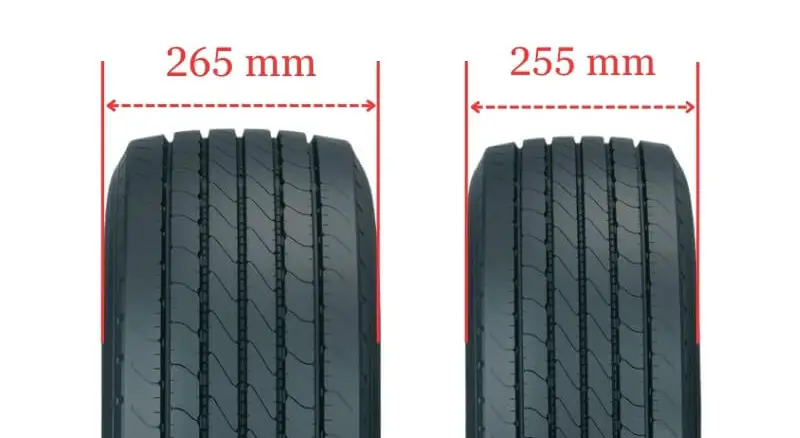
The main difference between a 255 and a 265 tire is the tread width, with the 265 being 10mm (or about 0.4 inches) wider Than the 255 tire. This results in a slightly larger contact patch for the 265 tires. This equates to about a 4% increase in width for the 265 tires.
255 vs 265 Tires
To grasp the main distinctions, we’ll examine the advantages of both 255 and 265 tire sizes.
| Feature | Tire Size 255 | Tire Size 265 |
|---|---|---|
| Tread Width | 255 mm | 265 mm |
| Ground Clearance | Good clearance | Slightly more clearance |
| Gas Mileage | Slightly better fuel efficiency | Comparable fuel efficiency |
| Ride Comfort | Smooth, comfortable ride | Similar ride comfort |
| Aesthetics | Looks nice | Slightly more aggressive looks |
| Handling | More responsive handling | Slightly more stable handling |
| Noise Levels | Comparable noise levels | Similar noise levels |
| Durability | Good durability and treadwear | Similar durability and treadwear |
| Snow/Rain Traction | Good traction in adverse conditions | Comparable traction in adverse conditions |
Ground Clearance
The 265 tire offers slightly more ground clearance thanks to its wider tread and diameter. This can help when driving over rough terrain or clearing obstacles.
However, the difference is minor, just a fraction of an inch, so both tires provide good clearance.
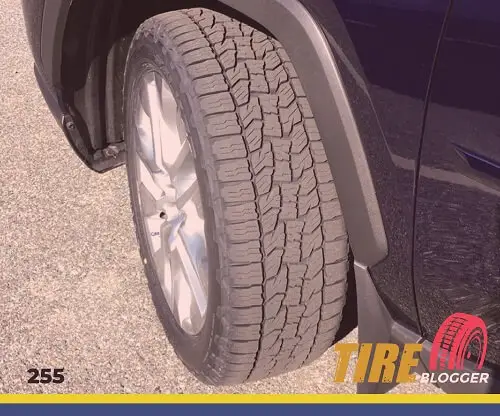
Gas Mileage
The 255 tire presents marginally less rolling resistance with a narrower tread, which could translate to slightly better fuel efficiency.
But again, the difference is slight, and gas mileage will be very similar between the two sizes in real-world conditions.
Ride Comfort
Ride comfort is comparable between 255 and 265 tires. The narrower 255 may transmit fewer vibrations, while the 265’s extra girth absorbs impacts better. Overall, both sizes deliver a smooth, comfortable ride on paved roads.
Aesthetics Look
Visually, the 265 tire looks somewhat more bold and aggressive due to its extra width. But the difference is subtle. Both sizes fill out the wheel wells nicely. For most purposes, looks are similar between the two.
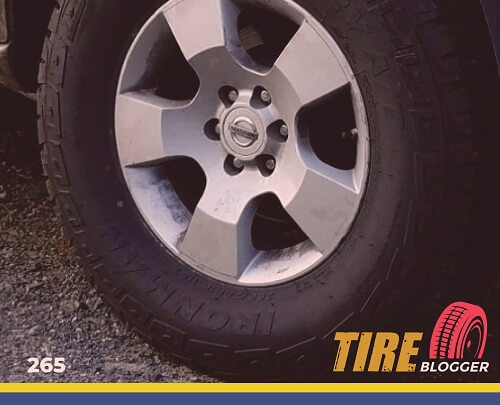
Handling & Stability
The 265 offers a touch more stability thanks to its broader contact patch. But the 255’s narrower footprint provides slightly quicker turn-in and handling response. Overall, both sizes deliver responsive, stable handling for daily driving.
Noise & Vibration
Tire noise is unlikely to differ noticeably between the 255 and 265. The 265’s wider tread produces more noise marginally, while the 255 transmits more vibration. Overall, noise and vibration levels are comparable.
Durability & Wear
With proper maintenance and alignment, durability and treadwear are similar between these two tire sizes. The 255’s narrower contact patch may promote slightly more even wear over time. But both exhibit good lifespans under normal conditions.
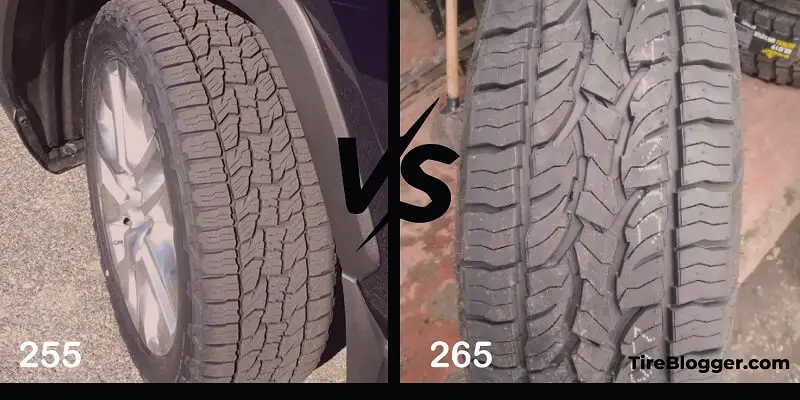
Adverse Condition
Performance in snow, ice, or heavy rain is comparable between 255 and 265 tires. The narrower 255 can cut through accumulations, while the 265 provides traction via its wider footprint. Overall, both sizes perform well in adverse conditions.
Difference Between 255 and 265 Tires
The main difference between 255 and 265 tires is the section width, with 265 tires being 10mm wider than 255 tires. This difference affects the tire’s performance, handling, and overall fitment.
Can I Use 255 Tires Instead of 265?
Yes, it is possible to use 255 tires instead of 265 tires since their ideal rim width ranges overlap. However, aspect ratio and rim diameter should also match to ensure proper fitment and performance.
Also, ensure that the aspect ratio and rim diameter are consistent with your existing setup. If there are discrepancies in either aspect ratio or rim diameter, the overall diameter difference should not exceed 3% to maintain accurate speedometer readings and optimal vehicle performance.
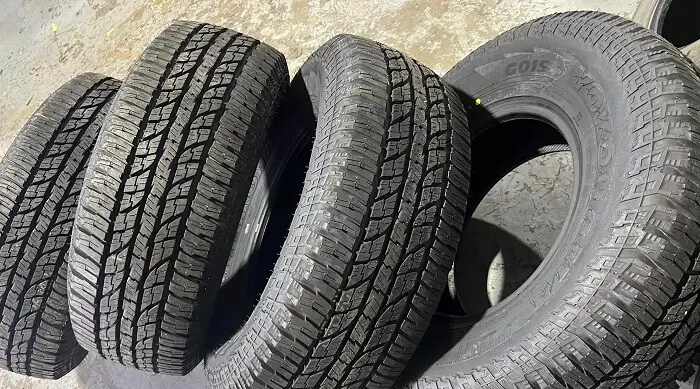
Can I Use 265 Tires Instead of 255?
Yes, you can use 265 tires instead of 255 tires because their ideal rim width ranges overlap. Keep in mind that aspect ratio and rim diameter should match to maintain vehicle performance and speedometer accuracy.
Ensure new tires have matching aspect ratio and rim diameter to current setup. If not, overall diameter difference should be under 3% for accurate speedometer and vehicle performance.
Can I Put 255 Tires on 265 Rims
Yes, you can put 255 tires on rims designed for 265 tires. The ideal rim width range for 265 tires (8.0-9.5 inches) overlaps with the range for 255 tires (8.0-9.0 inches), ensuring proper fitment.
Can I Put 265 Tires on 255 Rims
Yes, you can put 265 tires on rims designed for 255 tires. The ideal rim width range for 255 tires (8.0-9.0 inches) overlaps with the range for 265 tires (8.0-9.5 inches), allowing for proper fitment.
Our Observation
After comparing the differences between tire sizes 255 and 265, I’m struck by how subtle the real-world distinctions are. On paper, the 265 seems superior with its extra width and ground clearance.
But having assessed the nuances, it’s clear both deliver excellent overall performance. The wider 265 provides more stability and aggressive aesthetics, but drivers would not notice big handling or comfort differences.
Either size serves daily needs admirably. For most purposes, I don’t have a strong preference between the two. The choice comes down to personal taste.

Meet Caitlin McCormack, a Tire Size Expert and Blogger Passionate About Everything Related to Tires. With Years of Experience in the Tire Industry, Caitlin Has Become an Expert in Tire Sizes and Their Impact on Vehicle Performance.
